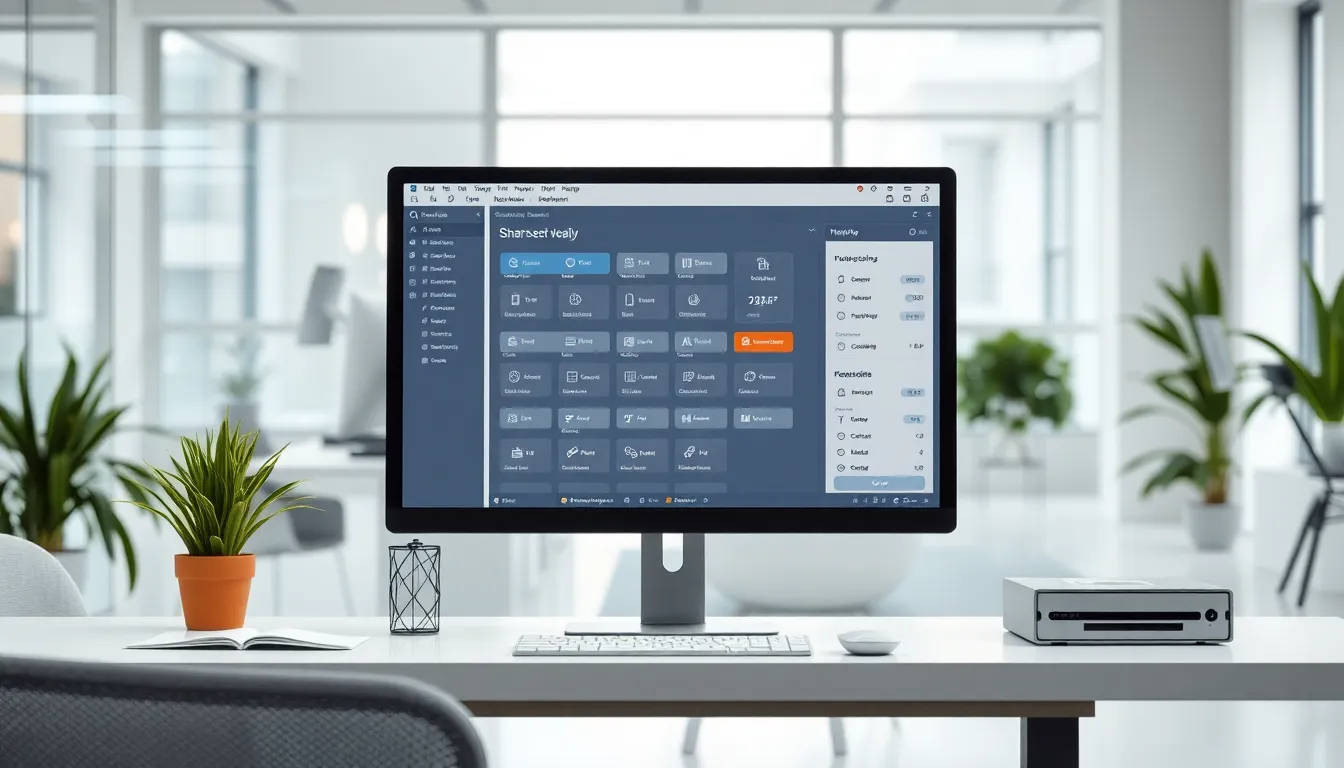Table of Contents
ToggleIn the fast-paced world of tech, developing software can feel like trying to assemble IKEA furniture without the instructions. Enter Oxzep7 software—a game changer that promises to streamline processes and boost productivity. Imagine a tool so intuitive it practically reads your mind, saving you from endless hours of frustration.
Overview of Oxzep7 Software
Oxzep7 software stands out due to its innovative approach to software development. This platform streamlines complex tasks, allowing developers to focus on creativity rather than repetitive processes. With an intuitive interface, it transforms the user experience from daunting to manageable.
Many features contribute to Oxzep7’s effectiveness. Automation tools minimize manual coding, which saves significant time. Collaborative functions enable teams to work together seamlessly, improving communication and productivity. The built-in templates further simplify project setup, ensuring a quicker start for development teams.
Scalability is another key advantage. As projects grow, Oxzep7 accommodates increased complexity without sacrificing performance. Users can adapt the software to fit specific needs, ensuring that it grows along with their objectives.
Analytics capabilities allow users to track progress and assess performance metrics easily. This data-driven approach fosters informed decision-making and enhances the overall quality of delivered projects. Moreover, Oxzep7 supports various programming languages and technologies, making it versatile for different development environments.
Ultimately, Oxzep7 software aims to elevate the development process. By providing efficient tools and fostering collaboration, it empowers users to achieve their goals more effortlessly. The software’s commitment to enhancing productivity helps overcome common challenges in software development, leading to successful outcomes.
Key Features of Oxzep7



Oxzep7 includes several standout features that enhance software development efficiency. Its design focuses on user satisfaction and productivity.
User Interface and Experience
A clean layout characterizes the user interface, enabling quick access to essential tools. Users navigate effortlessly due to intuitive controls that facilitate seamless interaction. Visual elements prioritize clarity, helping users grasp functionalities without extensive training. Customization options allow users to tweak their workspace according to preferences. Accessibility features cater to diverse user needs, ensuring a broad usability range.
Performance Metrics
Robust performance metrics track progress throughout the development lifecycle. Real-time data analysis highlights bottlenecks, enabling swift adjustments to maintain efficiency. Dashboards present key indicators, simplifying performance evaluation for team leaders. Historical data comparisons showcase trends, providing insights for future projects. Users can also set benchmarks, fostering a culture of continuous improvement.
Development Process of Oxzep7 Software
The development process of Oxzep7 software incorporates several crucial stages that ensure optimal functionality and user satisfaction.
Requirements Gathering
Gathering requirements involves understanding user needs in detail. Developers engage with stakeholders to identify specific functionalities and expectations. Effective communication plays a vital role in this phase, ensuring clarity and alignment. Utilizing surveys and interviews, teams can collect comprehensive input from users. The insights gained create a foundation for the software’s specifications, guiding the subsequent development stages.
Design and Architecture
Designing and architecting Oxzep7 software focuses on creating a user-friendly experience. Developers prioritize an intuitive layout, which simplifies navigation and enhances usability. Architectural choices consider scalability and performance from the outset. Diverse user needs are met through customizable templates and layouts. This stage emphasizes a clear structure that allows easy integration of features while addressing potential challenges early in the process.
Implementation Strategy
The implementation strategy outlines how the development team realizes the project vision. Agile methodologies are often employed to foster adaptability during the coding phase. Teams incrementally develop features, allowing for continuous feedback and adjustment. Automation tools streamline coding efforts, reducing repetitive tasks and enabling efficient progress. By monitoring performance metrics throughout implementation, developers can swiftly address any issues, ensuring a robust end product.
Testing and Quality Assurance
Quality assurance plays a vital role in the development lifecycle of Oxzep7 software. It ensures reliability and performance through various testing strategies.
Types of Testing Conducted
Functional testing verifies that each feature of Oxzep7 works as intended. Regression testing checks existing functionalities after updates to maintain stability. Performance testing assesses response times and resource usage under different loads. User acceptance testing involves real users evaluating the software to confirm it meets their needs. Security testing identifies vulnerabilities, protecting users from potential threats. Each testing type contributes to delivering a high-quality product.
Bug Fixing and Optimization
Bug fixing begins immediately after issues are detected during testing. Developers prioritize critical bugs, allocating resources effectively to address them. Optimization efforts focus on enhancing performance and ensuring smooth user experiences. Continuous integration processes facilitate prompt fixes, reducing downtime. Regular updates incorporate feedback from users, refining the software and enhancing functionality. Effective bug tracking systems also enable developers to maintain oversight of issues and solutions.
Deployment and Maintenance
Deployment of Oxzep7 software requires careful planning to ensure a smooth transition from development to production. Developers configure the environment and set up the necessary infrastructure before launching the software. Additionally, they train users on key features and workflows to maximize efficiency.
Maintenance follows deployment and involves regular updates and performance monitoring. Continuous assessment of system performance enables teams to identify and resolve issues promptly. They monitor logs for anomalies and performance metrics for signs of degradation, ensuring sustained reliability.
Routine updates introduce new features and improvements based on user feedback. Developers prioritize security patches to protect against vulnerabilities. Automated systems streamline this process, allowing timely updates without causing significant downtime.
Support is critical during the maintenance phase. Users can access resources like documentation, FAQs, or forums for troubleshooting assistance. Dedicated support teams address more complex issues, providing guidance and solutions to optimize user experience further.
Backup procedures establish safeguards against data loss. Regular backups protect project files and configurations, ensuring recovery options are available if issues arise. They create checkpoints for restoring previous states in case of a failure.
Finally, documenting every aspect of deployment and maintenance enhances transparency. Clear documentation tracks changes, user feedback, and resolutions, making future development cycles smoother. This documentation forms a knowledge base that empowers teams to build on past experiences, fostering a culture of continuous improvement.




